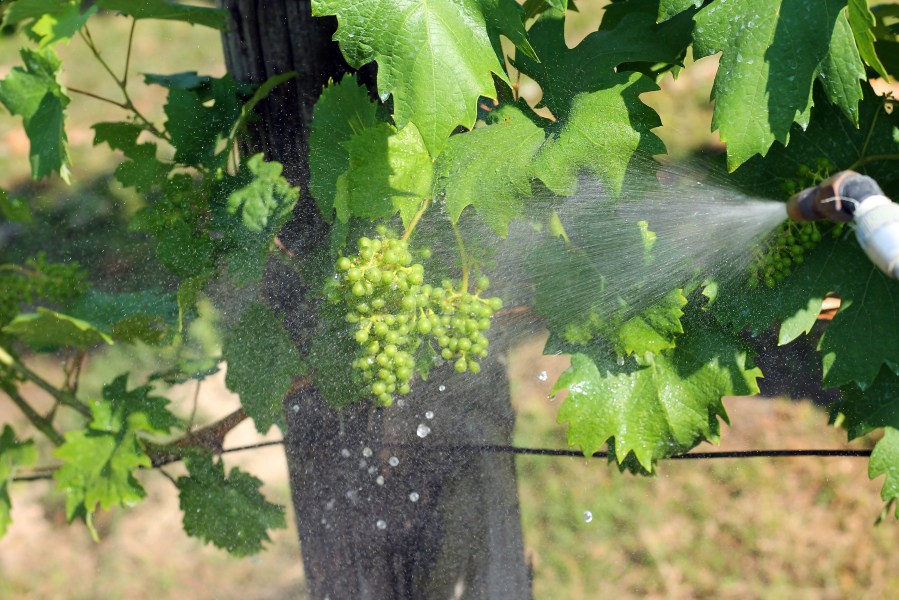Traditionally the crop protection focus in vines grown in the UK has been to control disease. In our climate the big three, botrytis, downy and powdery mildew, all have the capability to destroy the crop if given the chance.
The apparent change in the climate that has led to the recent expansion in planting vines, including by international investors looking for a ‘cooler’ climate, is also evidenced by the increase in pest pressure favoured by warmer temperatures. Since approximately 2010, moths and mites were established as a problem and a threat to cropping. In the last four years pests like spotted winged drosophila have arrived and there may be more hitherto unexperienced species yet to come.
New challenges that have an economic impact require improved approaches; not least those presented by stricter regulatory frameworks, for example those designed to better protect the environment that can also make the process of bringing new crop protection products to market a more lengthy and costly one, inevitably a cost to all.
Getting the best out of the products we have, by any practice that uses them more efficiently and effectively is important. Preventing disease is always cheaper than curing it in terms of the resources spent and the crop lost.
In grapes it’s about:
- Knowing when not to spray unnecessarily and to target the most vulnerable crop stages more intensively
- Employing practices when the canopy is a small target whereby pesticide inputs may be focussed or recycled
- When possible treating only the fruiting zone to optimise resource use and control
- Identifying risk by using weather data and predictive models to enable more effective targeting against pest and disease
- Running trials to identify the most effective treatments
- Having extensive industry experience to achieve the best results.
Adjuvants can represent an opportunity to increase the use efficiency of standard crop protection products. Among many definitions, an adjuvant is a chemical designed to improve the activity of pesticides and overcome the factors that limit pesticide performance. It’s certainly true that commercial pesticides are pre-formulated containing some adjuvants already which are intrinsic to their effect. However, because of the wide range of situations in which they are used, and economic considerations, they may be more generally formulated and may benefit in certain crops situations from more specific additives for improved results.
Some examples of beneficial adjuvant use:
- Wetter-spreader to improve disease control e.g. SP058
- Sticker to afford rain fastness in catchy weather conditions e.g. Spraygard
- Penetrant to improve the control of disease e.g. Transact
- Compatibility agent to assist pesticide mixing with foliar applied nutrients e.g. Kantor
- Drift retardant when applying herbicides e.g. Codacide oil
- Foam retardant for use with re-cycling sprayers e.g. Abate
- Buffer when using a hard water source e.g. Mixmate




